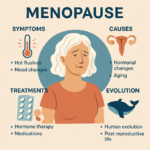
Down syndrome. It’s a term we might hear occasionally, but how much do we truly understand about it? Beyond the basic facts, there’s a whole world waiting to be explored – a world filled with unique strengths, inspiring stories, and incredible potential. Today, we’re embarking on a journey to discover 25 fascinating facts about Down syndrome. From the science behind the condition to the remarkable achievements of individuals with Down syndrome, we’ll gain a deeper appreciation for the rich tapestry of human experience. So, buckle up and get ready to be surprised, enlightened, and maybe even a little inspired. Let’s dive in!
From Mongolism to Down Syndrome: The term “Down syndrome” honors British doctor John Langdon Down, who first described the characteristic features of the condition in 1866. However, the term “mongolism” persisted for nearly a century. This term originated from the misconception that Down syndrome was linked to Asian ethnicities, which is demonstrably untrue. By the mid-20th century, the scientific community recognized the offensive nature of “mongolism,” and Down syndrome became the preferred term in 1965.
Extra Chromosome Mystery: The presence of an extra chromosome (usually chromosome 21) is the defining characteristic of Down syndrome. This additional genetic material disrupts typical development and causes the physical features and health conditions associated with the condition. Scientists are still unraveling the exact mechanisms by which this extra chromosome affects the body.
Not as Rare as You Think: While Down syndrome is not a common birth defect, with an incidence rate of about 1 in 793 babies in the United States, it’s one of the most frequent chromosomal conditions. This translates to roughly 6,100 babies born with Down syndrome each year in the U.S. alone.
Dramatic Increase in Life Expectancy: The significant rise in life expectancy for people with Down syndrome is a testament to medical advancements. In 1960, many children with Down syndrome didn’t survive beyond childhood due to heart defects and other health complications. Improved prenatal care, early intervention programs, and better management of health conditions have dramatically changed the outlook for individuals with Down syndrome.
Prenatal Testing Evolution: Amniocentesis, introduced in 1970, was a major breakthrough in prenatal diagnosis of Down syndrome. This invasive test involved extracting a sample of amniotic fluid surrounding the fetus to analyze chromosomes. Today, Non-invasive Prenatal Testing (NIPT) offers a safer and earlier option. This blood test performed on the mother as early as 10 weeks can screen for chromosomal abnormalities, including Down syndrome.
Unique Physical Characteristics: While not everyone with Down syndrome has all the characteristic features, some common physical presentations include:
A single crease across the palm of the hand (palmar crease)
Upward slanted eyes (epicanthic folds)
A small, flattened nose bridge
Short stature with small hands and feet
A protruding tongue
Loose and flexible joints
Developmental Milestones at Their Own Pace: Children with Down syndrome typically reach developmental milestones later than other children. Walking independently may occur by 18-24 months, and speech development may be delayed. Early intervention programs play a crucial role in supporting their development and helping them reach their full potential. These programs incorporate various therapies, including speech therapy, occupational therapy, and physical therapy, to address individual needs.
Immune System Paradox: People with Down syndrome have a weakened immune system, making them more susceptible to infections like respiratory illnesses, particularly in early childhood. However, this vulnerability appears to be specific to certain types of infections. They have a lower risk of developing some autoimmune diseases, such as type 1 diabetes, where the immune system attacks healthy tissues. Researchers are still investigating the reasons behind this paradox.
Learning Through Multiple Channels: People with Down syndrome often excel in visual learning. They benefit from instructional methods that incorporate pictures, videos, and other visual aids. Repetition and hands-on activities can also be very effective in helping them learn new skills and concepts.
Artistic Expression and Creativity: Many individuals with Down syndrome demonstrate a strong aptitude for visual arts, music, and dance. Art therapy can be a powerful tool for them to express themselves creatively and develop their artistic talents. There are numerous success stories of artists with Down syndrome who have gained recognition for their work, showcasing their creativity and artistic abilities.
World Down Syndrome Day: A Day of Awareness: World Down Syndrome Day is celebrated on March 21st (3/21) each year. The date was chosen specifically to signify the trisomy (extra copy) of the 21st chromosome, the defining characteristic of Down syndrome. This day raises global awareness about Down syndrome, promotes inclusion, and celebrates the achievements and contributions of people with Down syndrome. Events and activities are held worldwide to educate the public and advocate for the rights and well-being of individuals with Down syndrome.
A Milestone in Pediatric Heart Surgery: The first successful open-heart surgery on a child with Down syndrome was a landmark achievement. Performed in 1960 by Dr. Alfred Blalock Jr. at The Johns Hopkins Hospital, it paved the way for future advancements in pediatric cardiac care for children with Down syndrome. Congenital heart defects are one of the most common health complications associated with Down syndrome. This surgery demonstrated the possibility of corrective surgery for these heart defects, significantly improving the outlook for children with Down syndrome.
Self-Advocacy Takes Center Stage: Karen Gaffney’s testimony before the U.S. Senate in 1994 marked a significant milestone for self-advocacy by people with Down syndrome. She spoke about her experiences and the importance of education and employment opportunities for individuals with Down syndrome. This event highlighted the growing voice of self-advocates with Down syndrome and the importance of including their perspectives in discussions about their lives and needs.
Employment Gap and Inclusion Efforts: Despite having the skills and desire to work, only about one-third of adults with Down syndrome in the United States are employed. This highlights the ongoing challenge of achieving employment inclusion for people with Down syndrome. Several factors contribute to this gap, including societal biases, lack of awareness about their capabilities, and limited access to job training and support services. Advocacy efforts are working to bridge this gap by promoting inclusive workplaces and providing support programs to help individuals with Down syndrome secure and maintain meaningful employment.
Determination and Athletic Accomplishment: Karen Gaffney’s achievement in completing the Chicago Marathon in 2012 at the age of 52 is a testament to the determination and athletic potential of people with Down syndrome. This accomplishment shattered stereotypes and inspired others with Down syndrome to pursue their athletic goals. There are growing opportunities for athletes with Down syndrome to participate in competitive sports programs like the Special Olympics, showcasing their abilities and promoting a more inclusive sporting world.
A Global Network for Advocacy: Down Syndrome International (DSI), founded in 1968, is a leading global organization dedicated to improving the lives of people with Down syndrome. With member organizations in over 100 countries, DSI works to promote the rights, inclusion, and well-being of individuals with Down syndrome through various initiatives. They advocate for policies that support education, healthcare, and independent living for people with Down syndrome. DSI also plays a crucial role in fostering collaboration and knowledge sharing among Down syndrome organizations worldwide.
The Most Common Heart Defect: Atrioventricular septal defect (AVSD) is the most prevalent congenital heart defect in babies born with Down syndrome, affecting roughly half of them. This defect occurs when there is an opening in the wall separating the upper chambers (atria) and the lower chambers (ventricles) of the heart, along with abnormalities in the heart valves. Early detection and treatment with surgery or other interventions are crucial for managing AVSD and ensuring good heart health for children with Down syndrome.
Fingerprint Patterns and Down Syndrome: People with Down syndrome often have distinct fingerprint patterns compared to the general population. Studies have shown a higher prevalence of simpler fingerprint patterns, with fewer loops and whorls, in individuals with Down syndrome. The reasons for this difference are not fully understood, but researchers believe it may be linked to the effects of the extra chromosome on early fetal development.
A Heightened Risk of Leukemia: Children with Down syndrome have a slightly increased risk of developing acute lymphoblastic leukemia (ALL), a type of childhood cancer affecting the white blood cells. This risk is highest in the first few years of life, and with early detection and treatment, the prognosis for ALL in children with Down syndrome is generally good. Regular medical checkups and monitoring are important for early detection of any potential health concerns.
Memory Magic: Individuals with Down syndrome often excel in memorization tasks, particularly for visual information. Studies suggest they may have enhanced visuospatial memory, allowing them to remember details and patterns with remarkable accuracy. This strength in visual memory can be leveraged in educational settings and daily life to support learning and skill development.
Social and Emotional Development: A Spectrum of Experiences: People with Down syndrome can experience a range of social and emotional challenges. These may include difficulty with social interaction, communication delays, and emotional regulation issues. However, the severity and nature of these challenges vary greatly from person to person. Early intervention and support programs can significantly improve social skills and emotional well-being in individuals with Down syndrome. These programs can teach them social communication skills, strategies for managing emotions, and how to build and maintain friendships.
Unique Sleep Patterns and Challenges: Sleep disturbances are frequent among people with Down syndrome. Common issues include sleep apnea, a condition where breathing is interrupted during sleep, and difficulty falling asleep or staying asleep throughout the night. These sleep problems can impact their daytime functioning, causing fatigue, irritability, and difficulty concentrating. Addressing underlying medical conditions that may contribute to sleep problems and implementing good sleep hygiene practices can significantly improve sleep quality for individuals with Down syndrome.
Increased Risk of Celiac Disease: People with Down syndrome are more likely to develop celiac disease, an autoimmune disorder triggered by gluten, a protein found in wheat, barley, and rye. When someone with celiac disease consumes gluten, their immune system attacks the lining of the small intestine, leading to digestive problems and other health complications. Early diagnosis and adherence to a strict gluten-free diet are essential for managing celiac disease and preventing long-term health issues in individuals with Down syndrome.
Positive Personality Traits: A Hallmark of Many: People with Down syndrome are often described as friendly, outgoing, and having a strong sense of humor. They tend to be empathetic and compassionate towards others. These positive personality traits contribute to their ability to form strong bonds with family, friends, and caregivers. Their enthusiasm and zest for life can be truly inspiring.
Tania de Martel: A Reading Trailblazer: Tania de Martel (1943-2014), nicknamed “The Reading Lady,” is believed to be one of the first documented people with Down syndrome to learn to read fluently. Despite facing challenges and skepticism, Tania’s determination and love for learning helped her achieve this remarkable feat. Her story serves as a powerful inspiration, demonstrating the potential for individuals with Down syndrome to excel in various areas with proper support and opportunities.
5 FAQs About Down Syndrome:
What is Down syndrome?
Down syndrome is a condition caused by the presence of an extra whole or partial copy of chromosome 21. This genetic abnormality disrupts typical development and causes the characteristic physical features and health concerns associated with Down syndrome.
What are some common physical features of Down syndrome?
While not everyone with Down syndrome has all the features, some common presentations include:
A single crease across the palm of the hand (palmar crease)
Upward slanted eyes (epicanthic folds)
A small, flattened nose bridge
Short stature with small hands and feet
A protruding tongue
Loose and flexible joints
How does Down syndrome affect development?
Children with Down syndrome typically reach developmental milestones later than other children. This may include delays in:
Walking independently (may occur by 18-24 months)
Speech development
Social skills
Cognitive development
Early intervention programs are crucial in supporting their development and helping them reach their full potential.
Do people with Down syndrome have a normal life expectancy?
The life expectancy for people with Down syndrome has increased dramatically in recent decades. In 1960, the average life expectancy was around 10 years. Today, it’s risen to about 60 years old. Improved medical care, early intervention, and better management of health conditions have significantly improved the outlook for individuals with Down syndrome.
Can people with Down syndrome live independently?
Many people with Down syndrome can achieve a high level of independence with the right support systems in place. This may include living in supported housing arrangements, working in suitable jobs, and managing daily activities. Advocacy efforts are working to promote inclusive workplaces and provide support programs to help individuals with Down syndrome achieve greater independence and inclusion in society.








